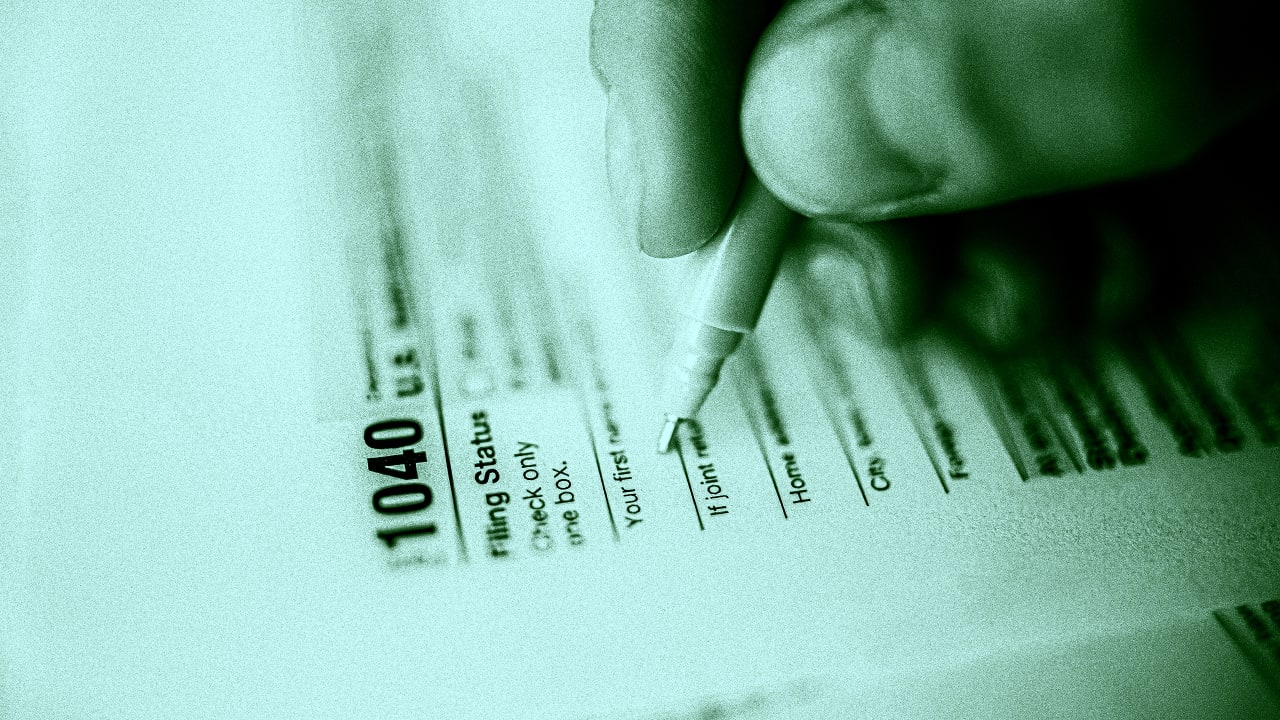Need more time to file your taxes? Here’s how to get the automatic extension
If you feel like you may need to file for an extension on your taxes this year, you’re not alone. Tax Day has a way of creeping up on all of us. One minute, we’re enjoying the sunshine and cherry blossoms, and the next we realize tax deadlines are upon us and we can’t remember where we put all of our documents. The good news is that you can quickly and easily get a six-month extension for filing your taxes, so you don’t have to turn in the paperwork until October 15. Unfortunately, the IRS is going to ask you to cough up any taxes you owe by April 15—or else. We spoke to enrolled agent Nicole Rosen of Boundless Advisors to find out what taxpayers need to know about the automatic tax extension. Here’s what we learned. How Do I Get an Automatic Extension? To apply for an automatic extension, you will need to fill out Form 4868, Application for Automatic Extension of Time to File U.S. Individual Income Tax Return and turn it in by the tax filing deadline of April 15, 2024; you can file it electronically using IRS Free File. Upon filing this form, you will automatically receive a six-month extension for filing your 2023 tax return. Your new due date will be October 15, 2024. Form 4868 is relatively simple to fill out (especially compared to Form 1040 and Schedules A-D). You simply need to provide your name, address, and Social Security number, as well as your estimated tax liability for 2023 and the amount you have already paid. The form asks you to subtract your total 2023 payments from your estimated liability to calculate your balance due. However, this extension is only for doing the work of filing your taxes. You’re still required to pay any taxes you owe by April 15. “That’s the number-one misconception about tax extensions,” Rosen says. “You don’t get extra time to pay, and will face the failure to pay penalty, plus interest, if you wait to pay.” How Much Do I Owe on April 15? Estimating your previous year’s tax liability may sound like a no-win situation rivaling the Kobayashi Maru. Many of us only figure out our liability (or overpayment, in the years when we get a refund) by doing the work of filing. So how can you estimate the liability without doing a full filing? That partially depends on how you make your money. W-2 employees If you’re a W-2 employee whose income hasn’t changed a great deal since 2022, estimating your liability is relatively straightforward. Start by looking up your total liability for 2022 and then subtract the following from that figure: Any taxes you have already paid in 2023, includingmoney withheld from your paychecks by your employer any estimated tax payments you made Any 2023 tax credits you qualify for, includingthe child tax creditthe child and dependent care credit the earned income tax credit Subtracting any 2023 taxes paid and 2023 tax credits from your 2022 tax liability should give you a reasonable approximation of your current liability. Self-employed taxpayers Of course, estimating your tax liability gets much more complex if you are a freelancer, small-business owner, or side-hustler extraordinaire. “That’s where having good records really comes into play,” Rosen says. “If somebody hands me a profit-and-loss statement, even if nothing else, I can usually get them a pretty good idea of what to pay.” Being able to quickly reference your total profits and losses for 2023, even it’s just from a spreadsheet or business bank account, will give you the starting point for estimating your liability. With your profit-and-loss statement in hand, determine your tax bracket based on your total income. The 2023 marginal tax rates range from 10% to 37% and depend on your total income and filing status. You can calculate your total tax liability using a marginal tax rate calculator like this one from Bankrate. Once you have that number calculated, subtract any taxes you paid in 2023 (generally through quarterly estimated payments) and any tax credits you qualify for. This calculation may be a little rough, but the number you come up with will generally be a decent approximation of your liability. “I tell people it’s a back-of-the-napkin tax return,” Rosen says. Taxpayers who changed jobs If your income has changed drastically or you switched from self-employment to W-2 employment (or vice versa), your best bet is to calculate your tax liability with the IRS 1040-ES 2023 Estimated Tax Worksheet. This is a long worksheet, but it will help you accurately determine your liability. This form is especially helpful to taxpayers who need an extension because of major changes in their income or employment. What Happens If I Don’t Pay? There are two ways the IRS will penalize you for failure to pay: a late payment penalty and interest charged on the amount you owe. Of the two, the late payment penalty is slightly less likely to give you an ulcer. The IRS charges you .05% per month (or partial month

If you feel like you may need to file for an extension on your taxes this year, you’re not alone. Tax Day has a way of creeping up on all of us. One minute, we’re enjoying the sunshine and cherry blossoms, and the next we realize tax deadlines are upon us and we can’t remember where we put all of our documents.
The good news is that you can quickly and easily get a six-month extension for filing your taxes, so you don’t have to turn in the paperwork until October 15. Unfortunately, the IRS is going to ask you to cough up any taxes you owe by April 15—or else.
We spoke to enrolled agent Nicole Rosen of Boundless Advisors to find out what taxpayers need to know about the automatic tax extension. Here’s what we learned.
How Do I Get an Automatic Extension?
To apply for an automatic extension, you will need to fill out Form 4868, Application for Automatic Extension of Time to File U.S. Individual Income Tax Return and turn it in by the tax filing deadline of April 15, 2024; you can file it electronically using IRS Free File. Upon filing this form, you will automatically receive a six-month extension for filing your 2023 tax return. Your new due date will be October 15, 2024.
Form 4868 is relatively simple to fill out (especially compared to Form 1040 and Schedules A-D). You simply need to provide your name, address, and Social Security number, as well as your estimated tax liability for 2023 and the amount you have already paid. The form asks you to subtract your total 2023 payments from your estimated liability to calculate your balance due.
However, this extension is only for doing the work of filing your taxes. You’re still required to pay any taxes you owe by April 15.
“That’s the number-one misconception about tax extensions,” Rosen says. “You don’t get extra time to pay, and will face the failure to pay penalty, plus interest, if you wait to pay.”
How Much Do I Owe on April 15?
Estimating your previous year’s tax liability may sound like a no-win situation rivaling the Kobayashi Maru. Many of us only figure out our liability (or overpayment, in the years when we get a refund) by doing the work of filing.
So how can you estimate the liability without doing a full filing? That partially depends on how you make your money.
W-2 employees
If you’re a W-2 employee whose income hasn’t changed a great deal since 2022, estimating your liability is relatively straightforward. Start by looking up your total liability for 2022 and then subtract the following from that figure:
- Any taxes you have already paid in 2023, including
- money withheld from your paychecks by your employer
- any estimated tax payments you made
- Any 2023 tax credits you qualify for, including
- the child tax creditthe child and dependent care credit
- the earned income tax credit
Subtracting any 2023 taxes paid and 2023 tax credits from your 2022 tax liability should give you a reasonable approximation of your current liability.
Self-employed taxpayers
Of course, estimating your tax liability gets much more complex if you are a freelancer, small-business owner, or side-hustler extraordinaire.
“That’s where having good records really comes into play,” Rosen says. “If somebody hands me a profit-and-loss statement, even if nothing else, I can usually get them a pretty good idea of what to pay.” Being able to quickly reference your total profits and losses for 2023, even it’s just from a spreadsheet or business bank account, will give you the starting point for estimating your liability.
With your profit-and-loss statement in hand, determine your tax bracket based on your total income. The 2023 marginal tax rates range from 10% to 37% and depend on your total income and filing status. You can calculate your total tax liability using a marginal tax rate calculator like this one from Bankrate.
Once you have that number calculated, subtract any taxes you paid in 2023 (generally through quarterly estimated payments) and any tax credits you qualify for. This calculation may be a little rough, but the number you come up with will generally be a decent approximation of your liability.
“I tell people it’s a back-of-the-napkin tax return,” Rosen says.
Taxpayers who changed jobs
If your income has changed drastically or you switched from self-employment to W-2 employment (or vice versa), your best bet is to calculate your tax liability with the IRS 1040-ES 2023 Estimated Tax Worksheet.
This is a long worksheet, but it will help you accurately determine your liability. This form is especially helpful to taxpayers who need an extension because of major changes in their income or employment.
What Happens If I Don’t Pay?
There are two ways the IRS will penalize you for failure to pay: a late payment penalty and interest charged on the amount you owe.
Of the two, the late payment penalty is slightly less likely to give you an ulcer. The IRS charges you .05% per month (or partial month) that your tax is not paid after the April 15 deadline. For instance, if you owe $10,000 and pay on August 31 instead of April 15, you will owe a late penalty of 2.5% or $250 for making your payment four full months and one partial month after the deadline.
The interest charged on unpaid taxes is where you can really end up hemorrhaging money. The IRS interest rate changes quarterly and is set at the federal short-term rate, plus 3%. The current interest rate for underpayment of individual taxes is 8% per year, compounded daily. The same $10,000 late payment on August 31 would result in about $307 in interest. What’s more, interest continues to run until you pay what you owe.
This is why Rosen recommends paying what you can, even if you’re not sure how much you owe. “If you’ve got the money, make the payment,” she says. “All your payment is going to do is save you money. If you overpay, great—you get a refund!”
Sending what you can will also help your bottom line, even if you underestimate what you owe. “Let’s say you pay $5,000 and you owe $10,000,” Rosen says. “Well, now the penalty and interest are only going to be calculated on the outstanding balance of $5,000 instead of the full $10,000.”
State-level Extensions
Of course, Uncle Sam may not be the only one you owe taxes to. If you live in a state with income tax, you may need to request an extension for that tax return as well.
In many states, applying for a federal tax extension automatically grants you an extension for your state taxes, while some states require a separate form to receive a state-level extension. All states with income tax require that you make a tax payment of any balance owed by the spring tax deadline if you need an extension. Find out exactly what your state requires here.
No Need to Panic
Even if you’re running behind on filing your taxes, you can get more time. As long as you pay any taxes you owe by April 15, the IRS makes it (relatively) easy to get a six-month stay of execution on doing the actual work of filing your taxes.






















